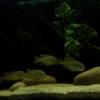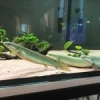Yes there is a risk. The interval between the parasite dropping off to multiply and reinfecting can take up to 28 days. that's why you quarantine the fish for a minimum of 4 weeks and leave the tank empty. So if you will run the risk of that happening if the tank hasn't be void of fish for 4 weeks
The lifecycle of the parasite is interesting and important to understand when evaluating a treatment. The stage where the parasite is attached to a fish is called a trophont. The trophont will spend three to seven days (depending on temperature) feeding on the fish. After that, the trophont leaves the fish and becomes what is called a protomont. This protomont travels to the substrate and begins to crawl around for usually two to eight hours, but it could go for as long as eighteen hours after it leaves it's fish host. Once the protomont attaches to a surface, it begins to encyst and is now called a tomont. Division inside the cyst into hundreds of daughter parasites, called tomites, begins shortly thereafter. This noninfectious stage can last anywhere from three to twenty-eight days. During this extended period, the parasite cyst is lying in wait for a host. After this period, the tomites hatch and begin swimming around, looking for a fish host. At this point, they are called theronts, and they must find a host within twenty-four hours or die. They prefer to seek out the skin and gill tissue, then transform into trophonts, and begin the process all over again.
Taken from reefkeeping











